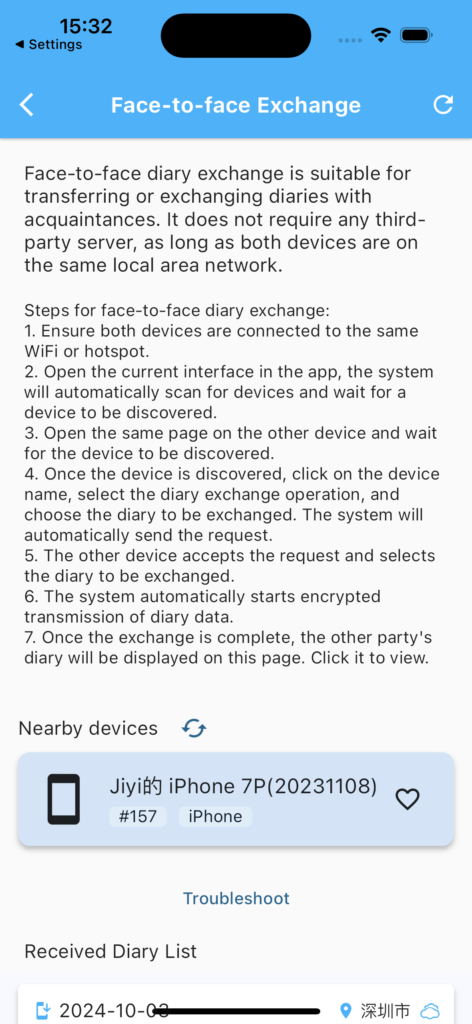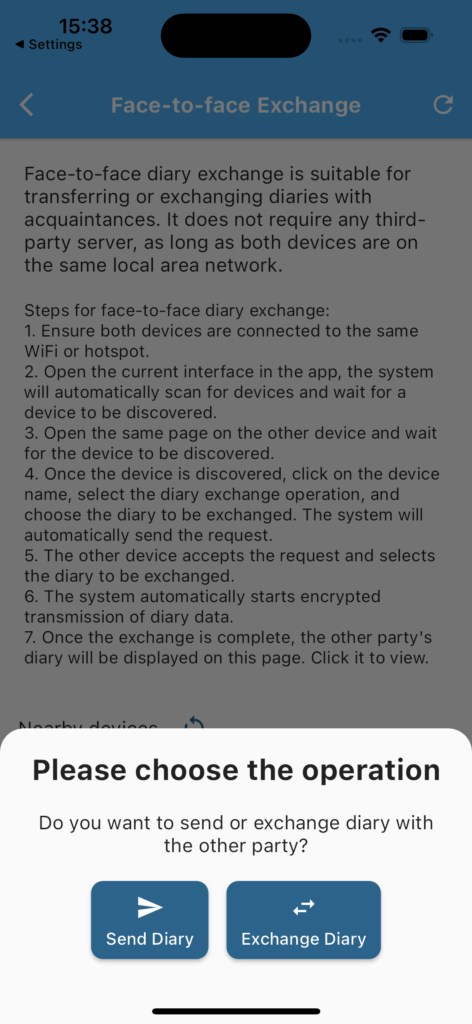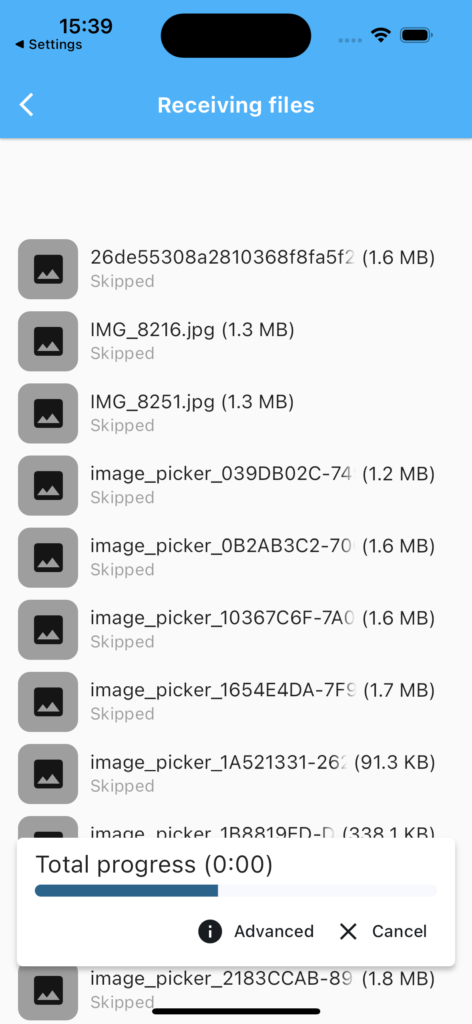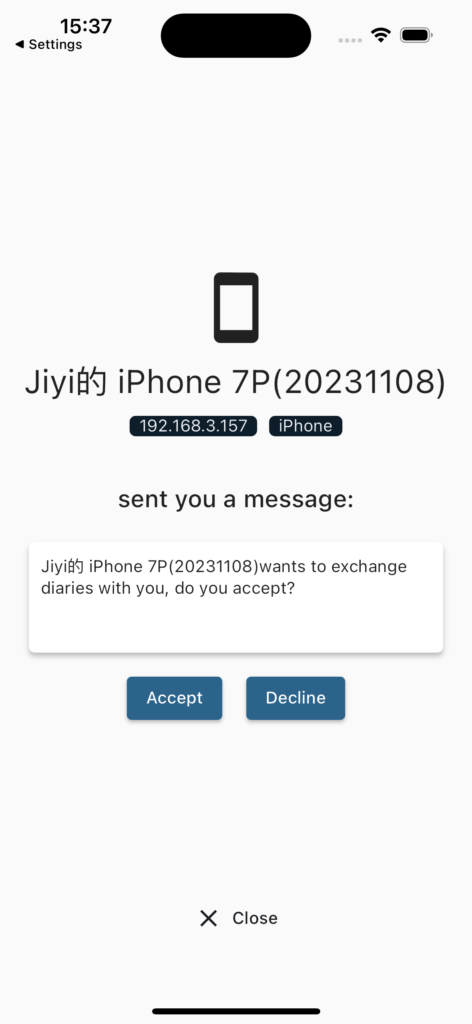When we come across a good article that we want to share with others, we usually send them the URL (link) to the article. If we want to share a diary entry, one way is to generate an image of the diary and send it to others. Of course, if the diary is online (stored on a server), you can also send its URL.
OneDiary provides an additional and more direct method: you can directly send the entire diary entry to the recipient.
Sharing via a URL requires the diary to be uploaded to a server first. Currently, OneDiary does not support uploading diary entries to a server. Sharing through a long image also has limitations, such as when the diary contains audio or video, the recipient won’t be able to play them.
Face-to-face diary sharing or exchanging is designed for transmitting or exchanging diary entries with someone you know. It doesn’t require any third-party servers, and only requires that both parties are on the same local network (LAN).
Face-to-face diary sharing was developed alongside the end-to-end offline backup feature, and both share the same underlying principle. They both establish an encrypted link between the two parties on the LAN to transmit data. When sending a diary, the user selects an entry, and the system packages it and transfers it to the recipient. The recipient then restores the data once it’s received. Diary exchange goes a step further, requiring the recipient to select an entry in return before the diaries are exchanged.


Sending a Diary
When selecting “Send Diary to Others,” the user will be prompted to choose a diary entry. After the user selects the entry, the recipient will receive a request.

Upon choosing “Accept,” the system will automatically receive the diary file.

Once the data transfer is complete, the sent diary will appear at the bottom of the current page under the “Received Diary List.” By default, the received diary will not be shown in the main diary list. To display this received diary in the main list, the user must open the entry and click the “Save” button in the upper-right corner.
This diary-sharing feature is useful in specific situations. For instance, if I have two phones—one for daily use and one for work—I may not want to fully synchronize diaries between the two devices. Instead, I can choose to send a few entries to the other phone or computer. This is where this feature becomes handy.
Exchanging Diaries
Diary exchange takes it a step further than just sending. The recipient will see a slightly different request.

After the user selects “Accept,” they will need to choose a diary entry to exchange. The rest of the process is mostly the same.
Diary exchange is suitable for couples or friends who want to share diaries. Although it’s a more niche scenario, OneDiary provides this feature just in case it proves useful for some users.
